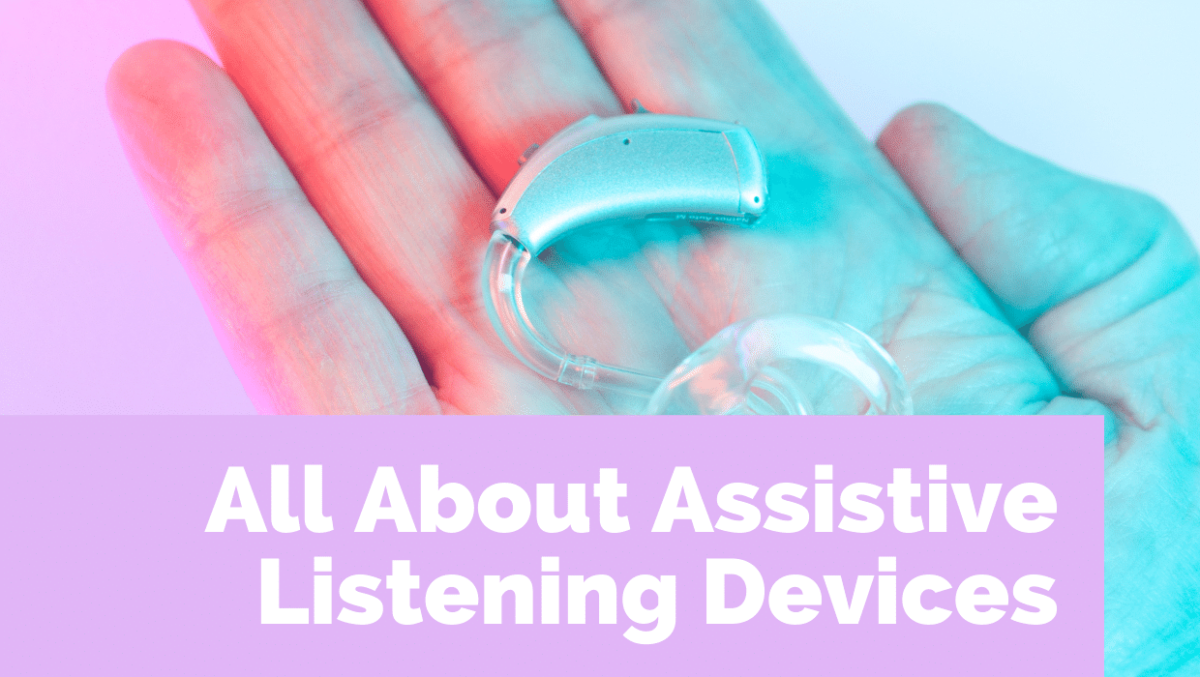Hearing aids are often the first step in treating hearing loss. They improve quality of life, reduce health risks associated with untreated hearing loss and facilitate better listening and communication. The performance of hearing aids can be enhanced with the added use of assistive listening systems (ALSs) and assistive listening devices (ALDs). Assistive listening technology amplifies sound from a focused source to improve your clarity and comprehension. Both ALD and ALS work in similar ways and can be set up for a variety of applications, from large public venues to one-on-one conversations.
Design of an ALS or ALD
Assistive listening systems are essentially a simple sound system with personalized amplification. The source of sound is captured with a microphone. Then, depending on the system, that sound signal is amplified and transmitted through a wire or wireless connection. Finally, sound is delivered either to an earpiece (for those without hearing aids) or directly to a hearing aid.
There are three major configurations of ALS and ALD technology: loop systems, FM systems and infrared systems. While each type offers the safe essential functions, each is also optimized for specific applications.
Loop Systems
Loop systems are also known as telecoil, t-coil and induction loop systems. These systems use an electromagnetic field to transmit sound. Loop systems are practical for large public spaces like airports, museums, arenas, movie theaters and churches. They can also provide assistance in more focused settings such as lecture halls or meeting rooms. Loop systems enclose their range within a loop.
Mosty hearing aids offer telecoil compatibility. Hearing aid users can use a small switch on their hearing aid or a digital control on their smartphone to switch between normal hearing and receiving audio from the loop system. Those who don’t use hearing aids can access the audio broadcast via induction loop if they have a loop receiver and earpiece.
FM Systems
In an FM-based ALS or ALD, radio waves are used to send amplified sound to the listener. FM systems can be highly portable and adaptable to one-on-one or small group conversations. FM microphones, transmitters and receivers can be small and their portability means they can move easily with a listener to different environments. From classrooms to dinner tables, FM systems provide small-scale flexibility for the listener with hearing challenges.
While the FM signal cannot stream directly to your hearing aid in most cases, the signal can be sent to a small receiver that attaches to your hearing aid. For those who do not use hearing aids, a personal FM ALS or ALD will deliver sound via an earpiece.
Infrared Systems
ALSs and ALDs that use infrared technology are far less common than FM or loop systems, but do have some distinct and important features. Infrared systems use light waves beyond the visible spectrum to convey amplified sound. Infrared systems can allow audio to be securely limited in a room – because walls block light, they enclose the infrared waves. For settings that are sensitive or private, such as a courthouse, infrared ALSs may make the most sense. Much like loop systems, infrared systems are pre-installed in the spaces and not as portable as FM technology.
Hearing aid users can use a listening coupler to access audio from infrared systems. For people who don’t use hearing aids, infrared ALSs and ALDs can be heard through a receiver and earpiece unit.
Taking Advantage of ALDs and ALSs
Making use of assistive technology can make it much easier to navigate the world around you, from catching a gate change at the airport to having dinner with your best friend. Your hearing healthcare provider can help you examine the options best suited for your lifestyle and show you options that integrate with your current hearing aids.
While some people with hearing loss use ALDs and ALSs without hearing aids, the most benefit is gained when they are used together. Treating hearing loss with hearing aids improves quality of life and overall health risks, in addition to making everyday communication easier and more enjoyable. Assistive devices do not act as substitutions for hearing aids, which are programmed specifically for the needs of your hearing loss.
ALDs and ALSs give an added boost to your hearing, so it pays off to make use of them whenever possible to maximize your comprehension.

